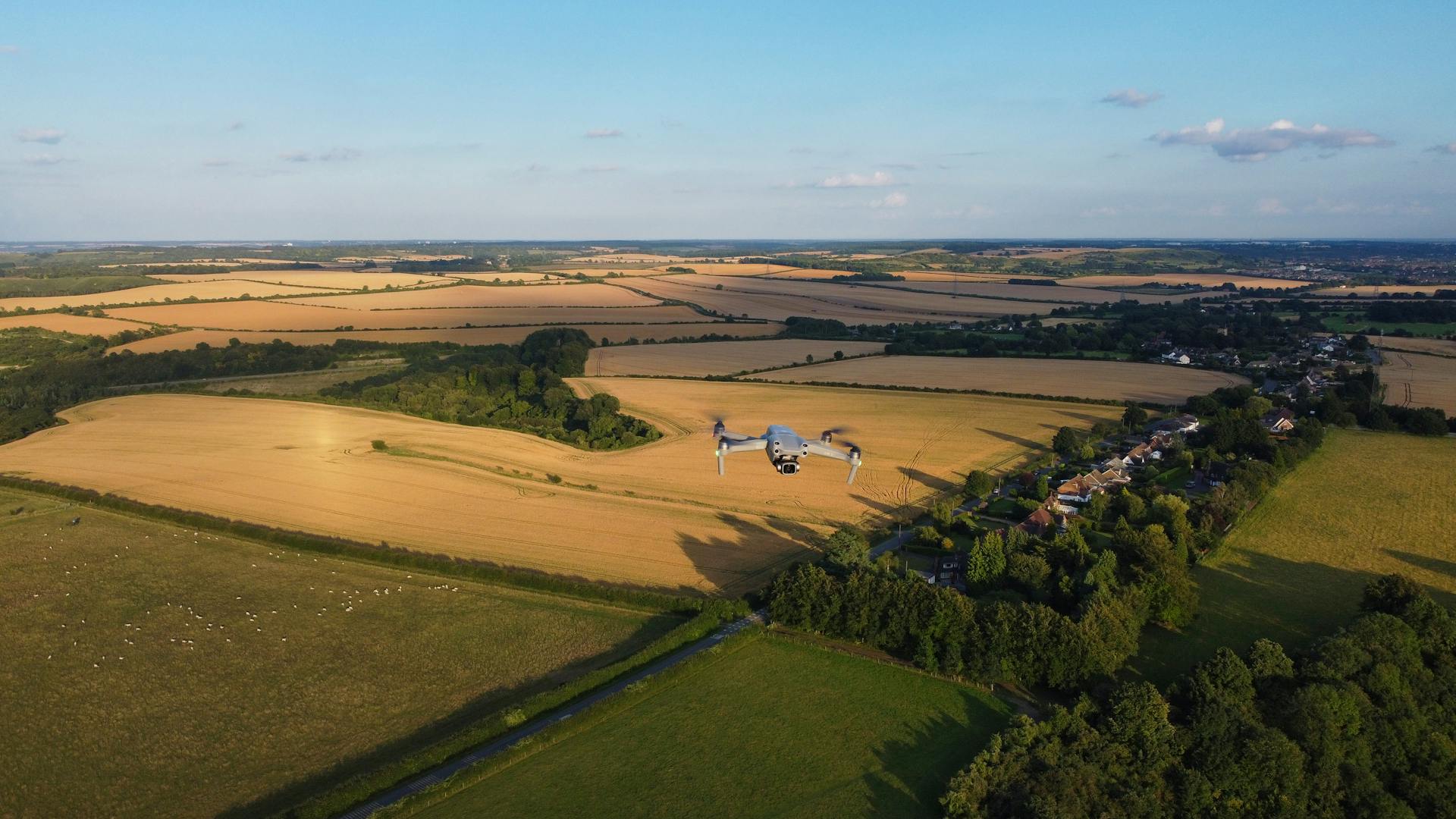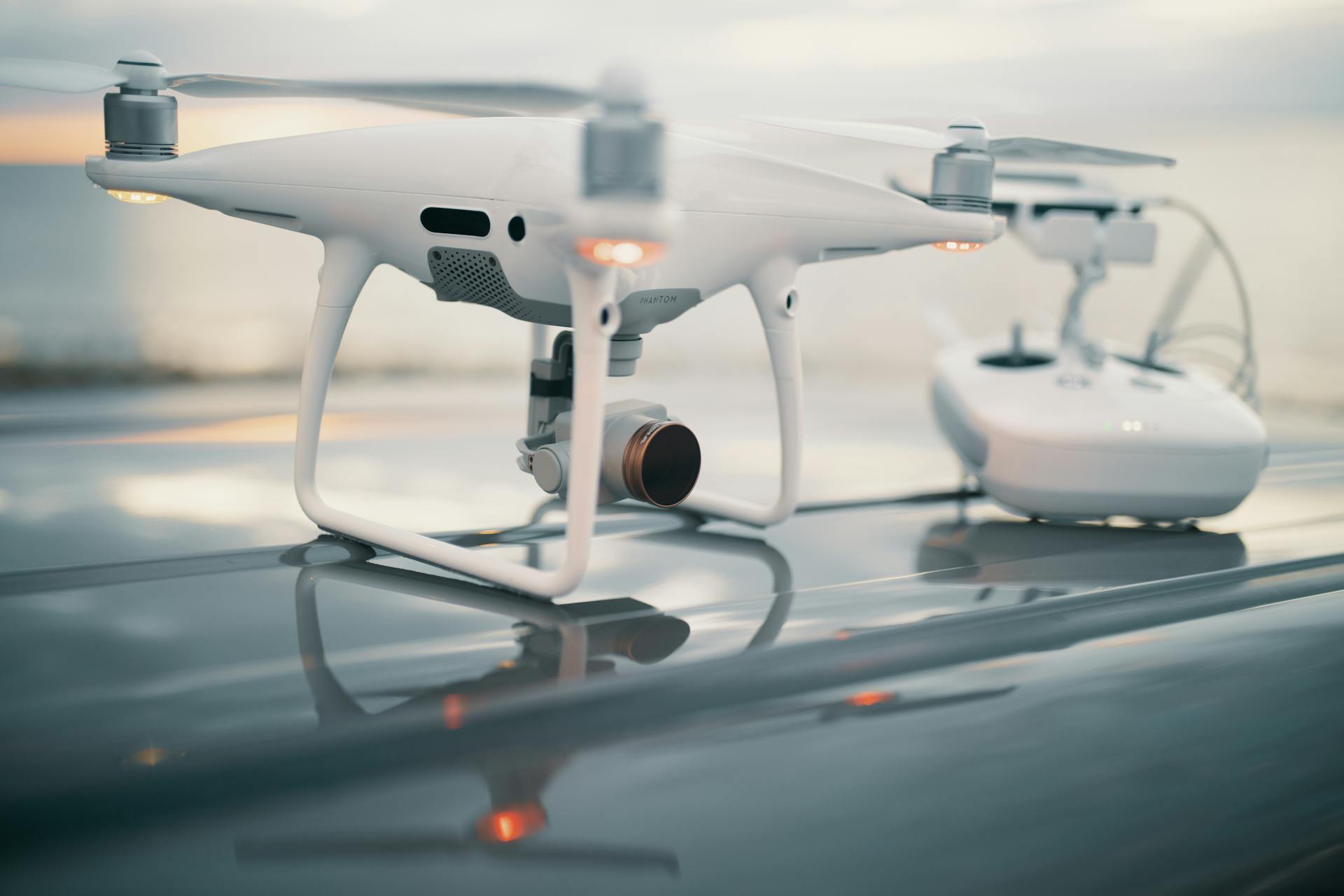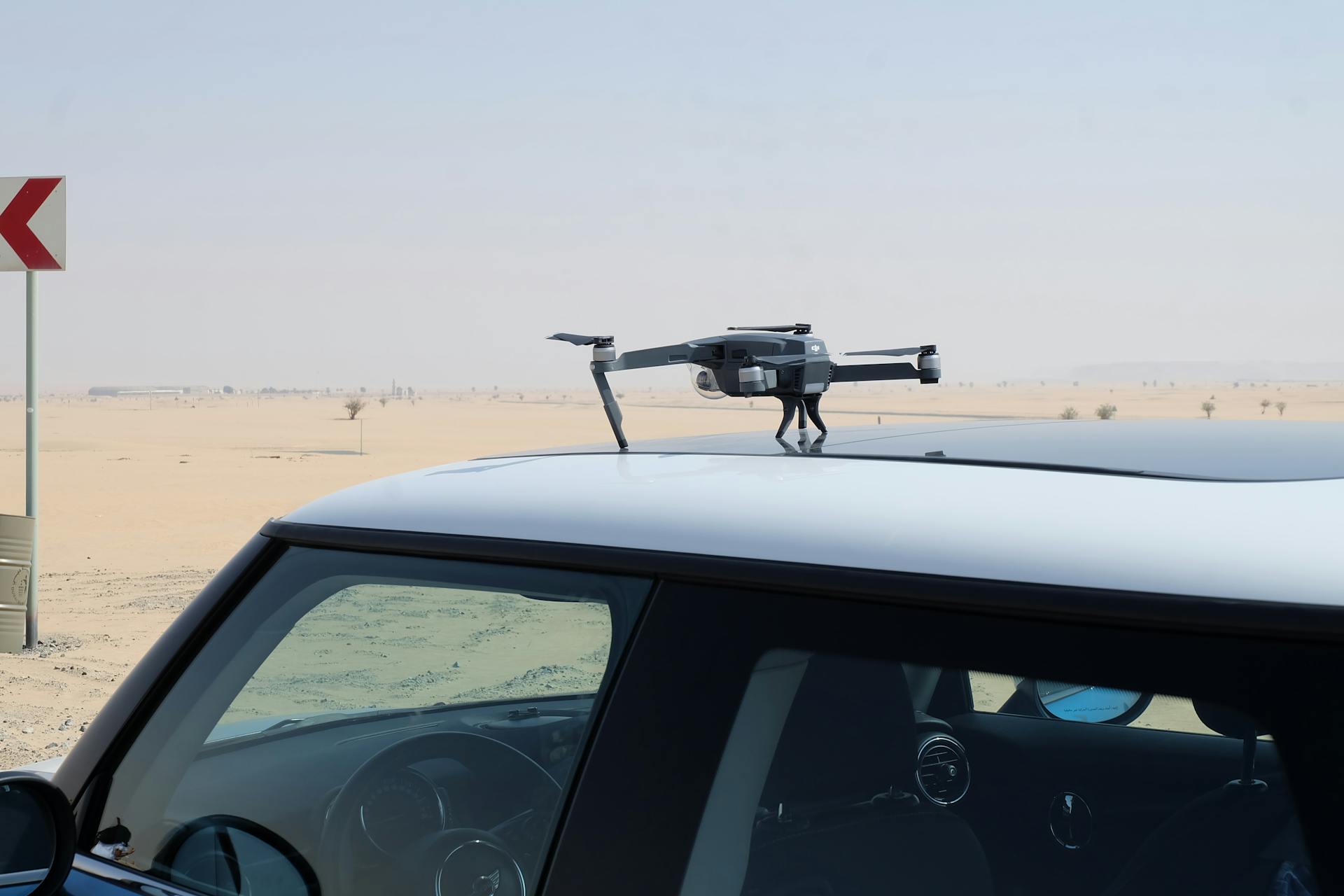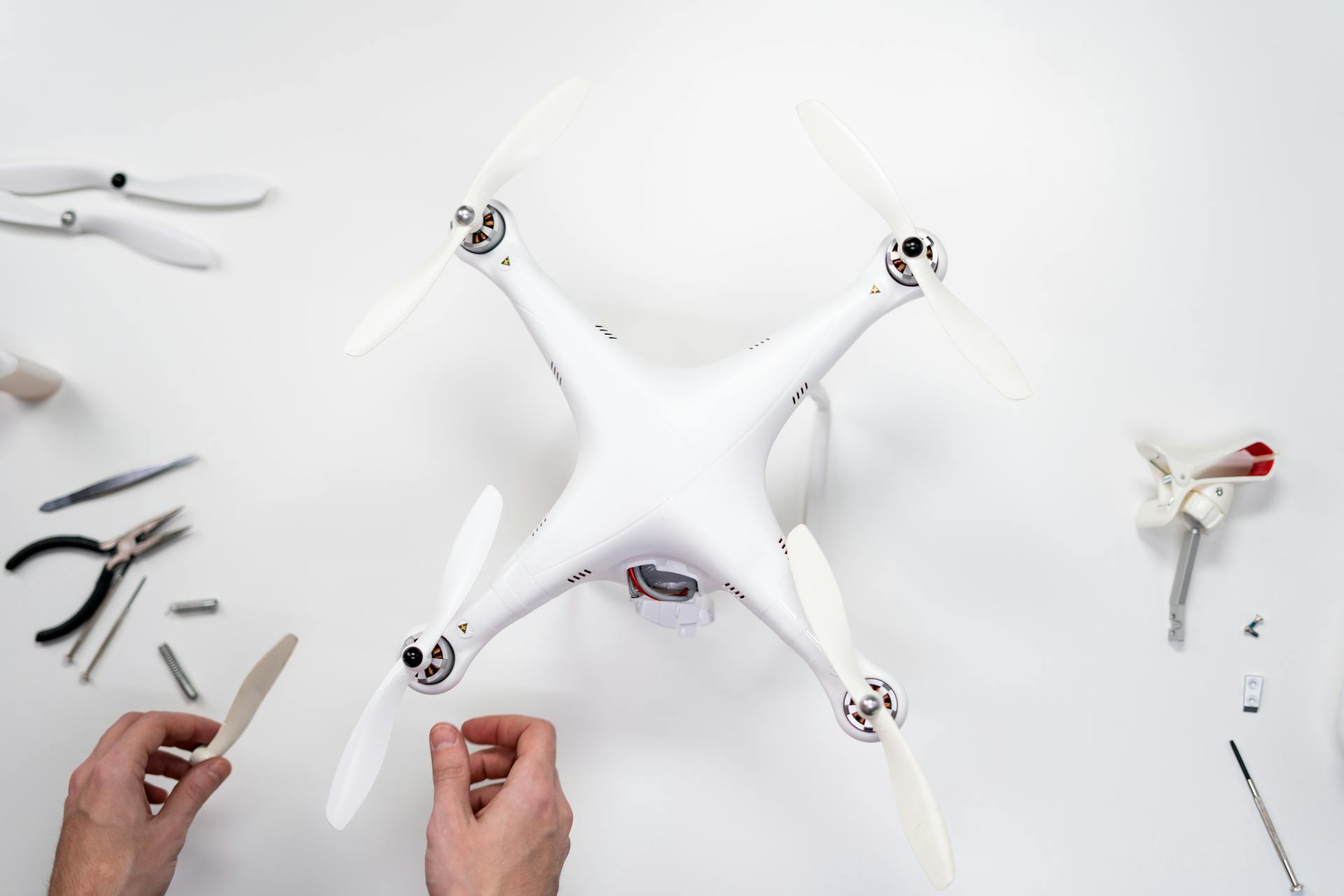
Law enforcement agencies have been increasingly using Unmanned Aerial Vehicles (UAVs), also known as drones, to enhance their operations and improve public safety.
UAVs can be equipped with a variety of sensors and cameras, including thermal imaging cameras, night vision cameras, and high-resolution cameras, which can be used to gather evidence and conduct surveillance.
These devices can also be used to quickly assess and respond to emergencies, such as search and rescue missions, and to monitor large crowds and events.
The use of UAVs in law enforcement is not limited to surveillance and evidence collection, but also includes aerial support for search and rescue operations, which can be especially useful in remote or hard-to-reach areas.
Readers also liked: Regulation of UAVs in the United States
Benefits and Advantages
Using UAVs in law enforcement has revolutionized the way police agencies operate, ensuring safer communities. With high-definition cameras and adapted payloads, drones can adapt to various security needs, making them ideal for surveillance and reconnaissance missions.
Drones are faster than conventional vehicles, reaching a location within minutes after receiving an emergency request. This allows for aerial assessment of the situation before human responders arrive, making them ideal first responders. They can also be equipped with loudspeakers for direct communication with crowds, enhancing crowd management and emergency response.
Drones are a cost-effective way to conduct aerial surveillance, reducing the need for expensive manned helicopters. This is particularly useful in situations that require an immediate response, such as counter-insurgency or hostage rescue.
Drones can potentially save lives by allowing police officers to engage perpetrators from a safe distance. In a recent event, 279 lives were saved by using drones in various emergency operations. This is a significant advantage over traditional methods, where officers may be put in harm's way.
Here are some of the key benefits of using drones in law enforcement:
- Drones are ideal first responders
- Drones are a cost-effective way to conduct aerial surveillance
- Drones can potentially save lives
- Drones are a potent public safety tool
In addition to these benefits, drones can also be used for traffic supervision, incident scene investigation, border patrol, public safety and emergency response, crime prevention, reporting and analysis, and training and strategic development.
Types of UAVs
Types of UAVs used by police departments are designed to cater to specific tasks, with quadcopters being the most common type. They're ideal for close-up surveillance, crowd monitoring, and accident scene documentation due to their agility and ability to hover steadily.
Quadcopters can take off and land vertically, making them practical in confined spaces and urban settings. They're also easy to use and deploy rapidly, which is essential in emergency situations.
Fixed-wing drones, on the other hand, have a single wing and can glide efficiently over long distances, making them suitable for extensive coverage missions like border patrol or search and rescue in remote areas. They can't hover, but their extended flight time and range make them invaluable for sustained aerial surveillance.
Hybrid drones combine the best of both worlds, offering the ability to take off and land vertically while covering long distances efficiently. This versatility makes them suitable for complex missions that require a combination of range, stability, and rapid deployment, such as search and rescue operations.
Suggestion: High Altitude Long Endurance Uav
Quadcopters
Quadcopters are the most common type of police UAV, and the most common type of drone in general.
They're popular among law enforcement for their agility, ease of use, and ability to hover steadily.
Quadcopters can take off and land vertically, making them practical in confined spaces, urban settings, and situations where rapid deployment is essential.
They're ideal for applications requiring stability, such as close-up surveillance, crowd monitoring, and accident scene documentation.
Hybrid
Hybrid drones combine the best of both worlds, offering the ability to take off and land vertically like quadcopters, while also covering long distances efficiently like fixed-wing drones.
This versatility makes them suitable for complex missions where a combination of range, stability, and rapid deployment is needed.
They're perfect for search and rescue operations that require a quick response and extended flight time.
In fact, hybrid drones can cover long distances, making them invaluable for missions that require sustained aerial surveillance, like monitoring large events or border patrol.
Their unique design allows them to adapt to different situations, providing law enforcement with a valuable tool for various tasks.
Worth a look: Long Endurance Uav
Applications and Uses
Police departments are employing drones in various ways to enhance their operations. Drones are being used for surveillance and monitoring, crime scene analysis, search and rescue operations, traffic management and accident assessment, border patrol, reporting and analysis, training and strategic development.
Drones provide an aerial perspective that allows law enforcement officials to quickly obtain intelligence, observe the movements of suspects, and take action when needed. They can be used for surveillance and reconnaissance missions, such as monitoring traffic, large events, or hunting down suspects.
In missing person searches or emergency rescue missions, police drones can provide comprehensive aerial searches. Drones equipped with megaphones and searchlights can help law enforcement officers quickly cover large areas and search for trapped or missing persons.
Drones are also being used for traffic supervision to monitor traffic flow, traffic accidents and traffic violations. By providing real-time traffic conditions and video images, police drones can assist law enforcement officers to more effectively manage traffic and respond to traffic jams and accidents.
Consider reading: Unmanned Drones for Law Enforcement
Here are some of the key applications and uses of drones in law enforcement:
- Surveillance and reconnaissance
- Search and rescue operations
- Traffic supervision
- Incident scene investigation
- Border patrol
- Reporting and analysis
- Training and strategic development
These applications and uses are making law enforcement operations more comprehensive and effective.
5 Key Features
The use of Unmanned Aerial Vehicles (UAVs) in law enforcement is a game-changer, and it's all thanks to the advanced technology that comes with them. One of the key features that makes UAVs indispensable in policing is their autonomous flight capabilities.
Autonomous flight technology enables drones to navigate and carry out missions with minimal operator input. This is particularly beneficial in situations where rapid response is critical, such as active shooter incidents or missing persons cases, allowing drones to provide crucial support faster than ever before.
Another crucial feature is the high-resolution cameras and thermal imaging that are standard on most models. These allow for detailed surveillance in various environmental conditions, and thermal imaging can be especially useful during nighttime operations or in search and rescue missions where visibility is compromised.
See what others are reading: UPS Flight Forward
Drones can also be equipped with facial recognition technology, further expanding their utility in crowd monitoring and suspect identification. This is a significant advantage in large public gatherings, where drones can provide a bird's-eye view that helps in crowd control and monitoring for any disruptive behavior.
In addition to these features, GPS and advanced navigation systems allow drones to operate with precision, even in complex environments. This accuracy is particularly useful in monitoring large areas, patrolling borders, or mapping crime scenes for investigative purposes.
Here are the 5 key features of UAVs in law enforcement:
- Autonomous flight capabilities
- High-resolution cameras and thermal imaging
- Facial recognition technology
- GPS and advanced navigation systems
- High-definition cameras with zoom lenses
These features make UAVs invaluable assets in modern policing, enhancing the effectiveness of law enforcement agencies and improving their ability to respond swiftly and appropriately to various situations.
Programs and Implementation
Implementing a UAV program in law enforcement requires careful consideration of the operational needs and regulatory requirements. Police departments can establish a drone program either by operating under the FAA's Part 107 rules or by applying for a Certificate of Authorization (COA).
To operate under Part 107 rules, departments must familiarize themselves with the regulations, ensure pilot certification, acquire necessary equipment, and develop departmental policies and procedures. This approach is often faster and simpler to set up, but it comes with certain limitations, such as restrictions on night operations or flying over people without waivers.
A Certificate of Authorization (COA) allows public safety agencies to operate drones for specific, approved purposes, often with fewer restrictions than Part 107. This approach is suitable for departments needing greater operational flexibility.
Here are the steps to follow when applying for a COA:
- Apply for a public safety COA through the FAA's FAA Public Safety and Government portal.
- Complete the FAA COA process by providing a detailed operational plan.
- Ensure pilot and staff training, including drone operation, airspace awareness, and emergency procedures.
- Establish and maintain communication with local air traffic control (ATC) for COA operations in controlled airspace.
- Define and document use cases and protocols for drone deployment.
- Implement privacy and data management policies to ensure data captured by drones is handled in compliance with privacy laws.
- Conduct regular maintenance and safety checks to maintain COA compliance.
The presence of DFR programs in police departments can improve response times, especially in time-sensitive situations like burglaries, car accidents, or disturbances. The Chula Vista Police Department launched the first ever DFR program in 2018, showcasing the potential of drones in emergency response.
Technology and Integration
Drones for police departments can integrate seamlessly with existing security infrastructure, enhancing the efficacy of traditional surveillance methods by feeding aerial data into central monitoring systems.
Real-time data transmission enables law enforcement drones to send live video and data feeds directly to officers on the ground, providing immediate situational awareness and allowing command centers and field officers to make rapid, informed decisions.
The integration of drones with other police systems, such as surveillance networks, body cameras, and data analytics platforms, is another promising trend. By connecting drones for police departments with existing technologies, departments can streamline data collection and improve situational awareness.
Drones equipped with AI can analyze large amounts of data quickly, recognize patterns, and make decisions in real time, automatically identifying suspicious behaviors or objects and alerting human operators to potential threats more quickly than ever before.
The rollout of 5G networks is expected to boost drone capabilities by providing faster, more reliable data transfer, making it possible for officers to receive instantaneous updates from the drone and improving situational awareness, especially in dynamic situations where officers need real-time information to make critical decisions.
Autel drones are driving the development of smart law enforcement in cities, offering transformative solutions that reshape law enforcement operations with the integration of traffic management, inspection, and criminal investigation capabilities.
Autel drones excel in target tracking and recognition, utilizing smart AI algorithms to detect critical details such as fugitive facial data, car license plates, and more, while there are technical challenges in accurately identifying and targeting faces, Autel's continuous innovation promises breakthroughs in this field.
Accessories and Equipment
Police drones can be equipped with a high-resolution RGB camera, a thermal imager for heat detection, and replaceable load accessories like a Spotlight, Strobe, and Loudspeaker.
These accessories enhance situational awareness, flexibility, and the ability to perform tasks efficiently. They can also include GPS trackers, payload release mechanisms, and gas and chemical sensors.
These additional features help improve the agility of police drones, making them useful for search and rescue missions, critical surveillance, and security tasks.
L-35T Gimbal Camera
The L-35T Gimbal Camera is a powerhouse of a device, packed with features that make it an essential accessory for any drone operation. It comes equipped with a 640x512 thermal camera.
One of the standout features of the L-35T is its impressive zoom capabilities, with a 56x hybrid zoom that allows you to capture high-quality images from a distance. This is especially useful for surveillance and search and rescue missions.
The thermal camera itself boasts a resolution of 640x512 pixels, making it one of the most detailed thermal cameras on the market. This level of detail can be crucial in identifying objects and people in low-light environments.
The L-35T also features a 13mm focal length wide-angle thermal imaging lens and a 45mm focal length long-range thermal imaging lens. This versatility allows you to capture high-quality thermal images in a variety of situations.
Here are the key specs of the L-35T Gimbal Camera:
- 640x512 thermal camera
- 56x hybrid zoom
- 13mm focal length wide-angle thermal imaging lens
- 45mm focal length long-range thermal imaging lens
Strobe for Series
When working with drones, having the right accessories can make all the difference. The Autel Strobe for EVO II Series is a great option for those who want to enhance their drone's capabilities.
This strobe has a controllable range of 5000 meters, giving you the flexibility to capture high-quality footage from a distance.
One of the standout features of this strobe is its adjustable light intensity, which ranges from a minimum of 50cd to a maximum of 486cd, with an average of 290cd.
Departments and Agencies
Police departments and agencies across the US are embracing the use of Unmanned Aerial Vehicles (UAVs) to enhance their law enforcement operations.
A survey conducted by policeone.com in 2018 found that 83% of responding police officers reported using UAVs for search and rescue operations.
Many law enforcement agencies are using drones equipped with cameras and thermal sensors for first responder operations. These drones can be used for a variety of tasks, including surveillance and reconnaissance.
Off-the-shelf and custom drones are being used by police departments for operations such as SWAT, disaster management, and monitoring crime and traffic. In fact, 71% of respondents in the policeone.com survey reported using UAVs for monitoring crime and traffic.
The DJI brand is a popular choice among police departments, with a significant number of respondents in the survey reporting that they use DJI drones.
Here are some examples of how police departments are using UAVs:
- Search and rescue: 83%
- Disaster management: 79%
- SWAT operations: 76%
- Monitoring crime and traffic: 71%
These statistics demonstrate the growing use of UAVs in law enforcement and highlight the potential benefits of using these devices for a range of tasks.
Considerations and Impact
Using UAVs in law enforcement raises significant ethical considerations, particularly regarding privacy concerns, which must be addressed to maintain public trust and protect civil liberties.
Drones equipped with surveillance capabilities can lead to invasive monitoring if not regulated properly, so it's crucial for law enforcement agencies to establish clear guidelines that define the circumstances under which drones can be used.
Public disclosure of drone use policies and engagement in community discussions can help alleviate concerns and build trust between law enforcement and the communities they serve.
The potential for misuse of drone technology calls for strict oversight and accountability mechanisms, including training for drone operators that emphasizes ethical considerations and legal boundaries.
Drones have the potential to significantly impact community policing strategies and public perceptions, with the enhanced surveillance capabilities of drones increasing security but also leading to feelings of constant monitoring and a loss of privacy among community members.
To mitigate potential negative perceptions, law enforcement agencies should proactively engage with the community to explain the benefits and safeguards of using drones in policing, such as through public meetings, demonstrations of drone technology, and open forums.
Integrating drones into community policing efforts can enhance service delivery and response times, which can help build public trust, and demonstrations of how drones have been used to locate missing persons, combat crime, and manage emergency situations effectively can highlight their value as tools for public good.
The use of drones in search and rescue operations not only enhances operational capabilities but also ensures greater safety for the rescue teams, giving an overview and spotting dangers, aiding in planning rescue missions and lowering risk for first responders.
Drones can be equipped with a variety of payloads, including traditional RGB cameras, thermal imaging payloads, and communications equipment, making them a key asset in search and rescue scenarios.
Adopting drone technology offers law enforcement agencies a cost-effective alternative to more traditional methods of surveillance and monitoring, with operational costs significantly lower than those associated with manned aircrafts.
The deployment of drones also leads to more efficient resource allocation within law enforcement agencies, allowing officers to focus on community engagement and other high-priority tasks that require human interaction.
Frequently Asked Questions
What is the application of UAV in defense?
Drones are used in defense for real-time battlefield surveillance, scouting, and artillery targeting. They help establish a virtual network for Line of Sight (LoS) and provide critical tactical information
Why do police use drones at night?
Police use drones at night to detect heat signatures of humans and animals through thermal imaging technology, even in obscured areas. This allows them to locate and respond to situations more effectively in low-light conditions.
Does the dea use drones?
Yes, the DEA uses drones in surveillance missions, often in collaboration with other agencies such as the FBI and Border Patrol. Drones are shared with state and local police with surprising frequency.
Sources
- https://elistair.com/resources/police-drones/drones-for-police/
- https://www.dronepilotgroundschool.com/police-drone/
- https://www.autelpilot.com/pages/police-drones
- https://www.performance-protocol.com/post/law-enforcement-drones-do-they-enhance-surveillance-and-response-capabilities
- https://www.flytbase.com/blog/drones-for-law-enforcement
Featured Images: pexels.com


